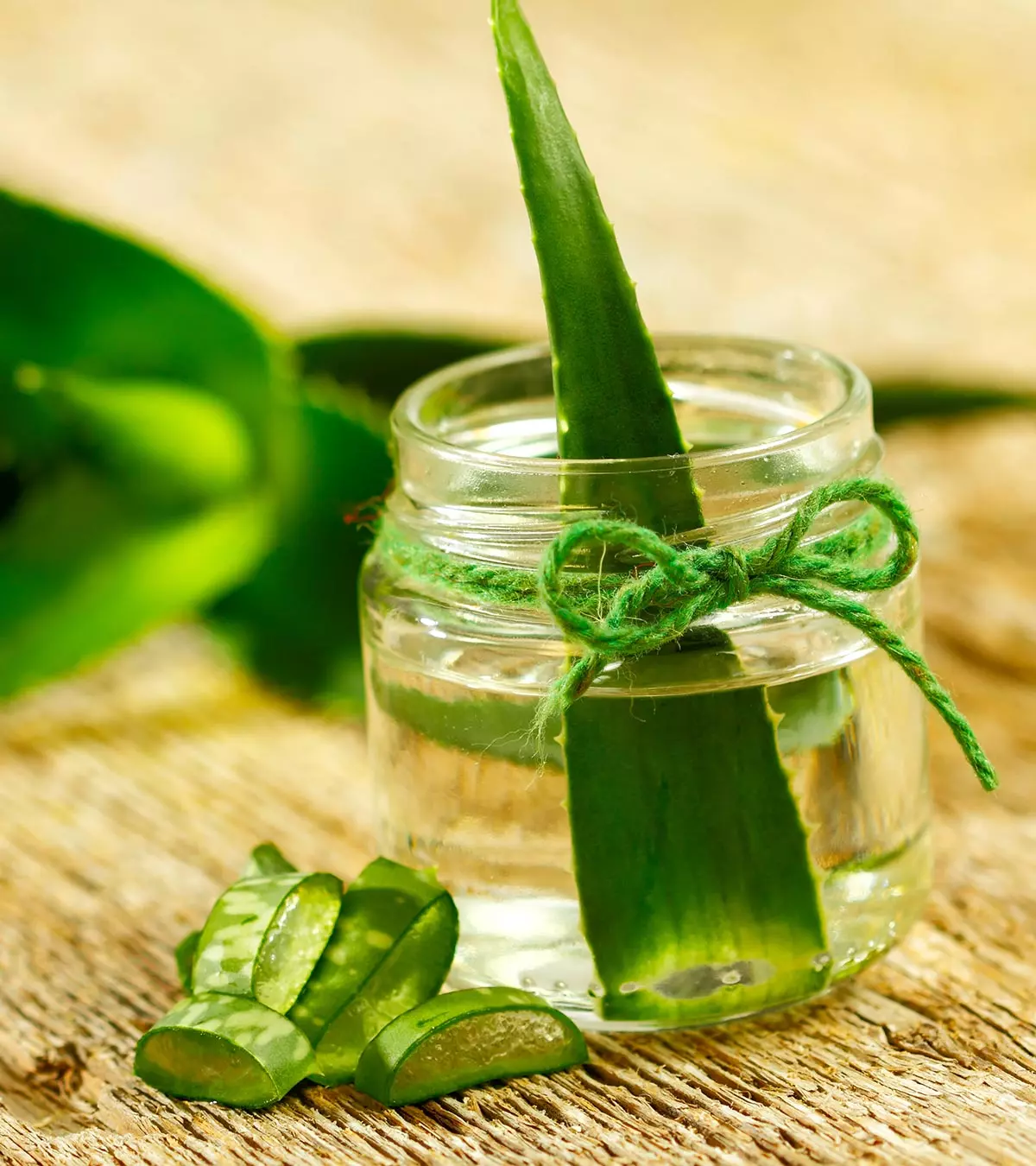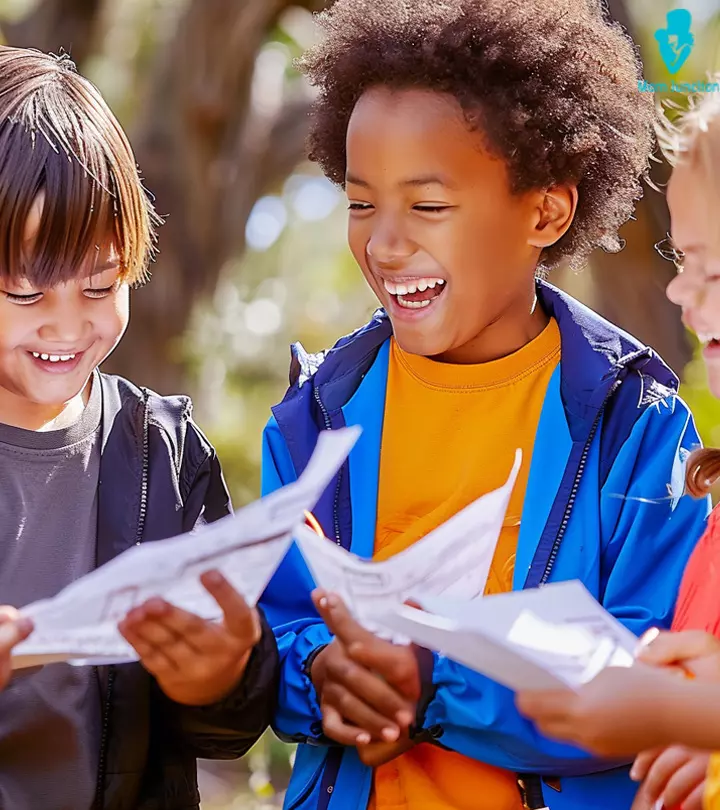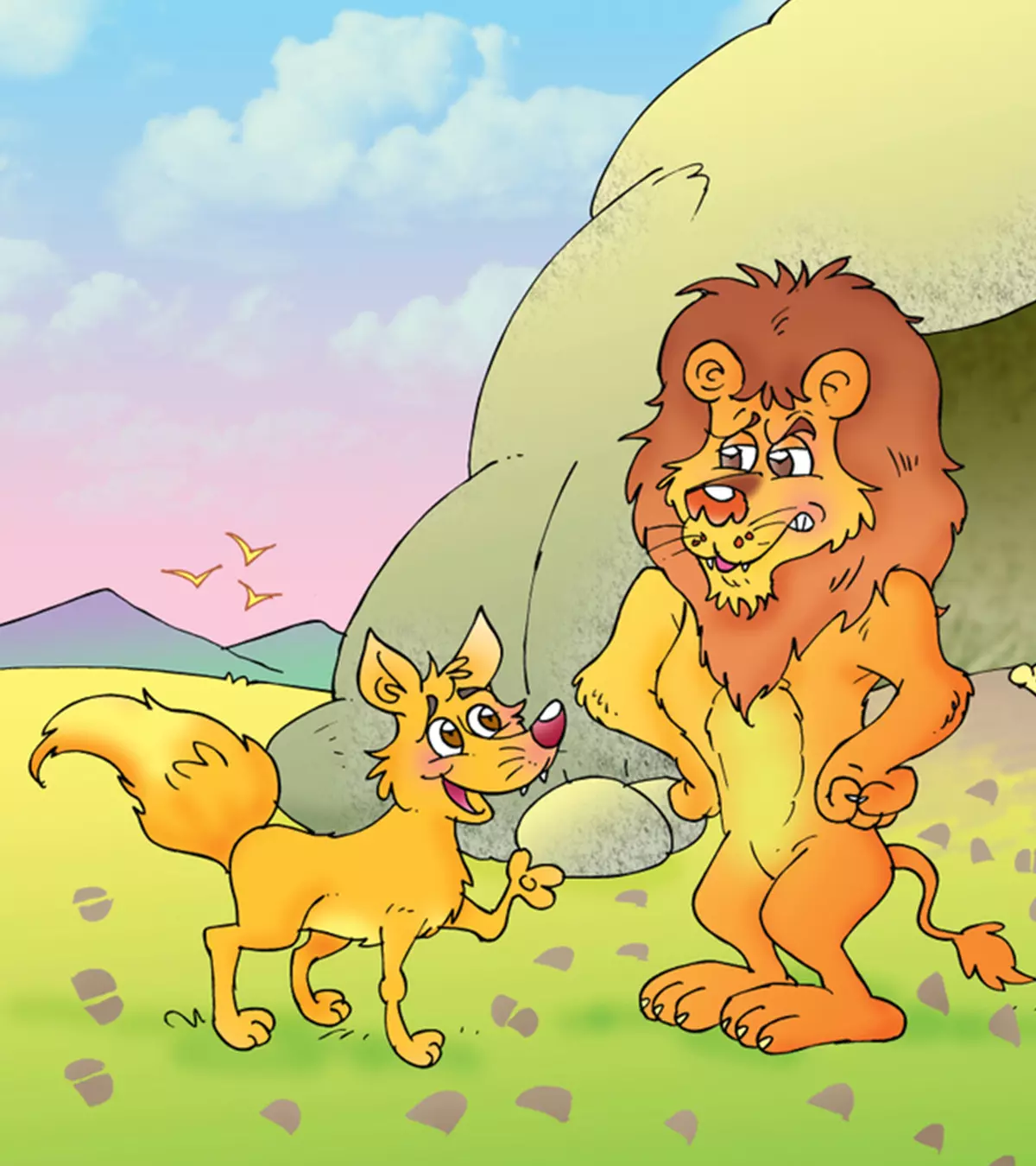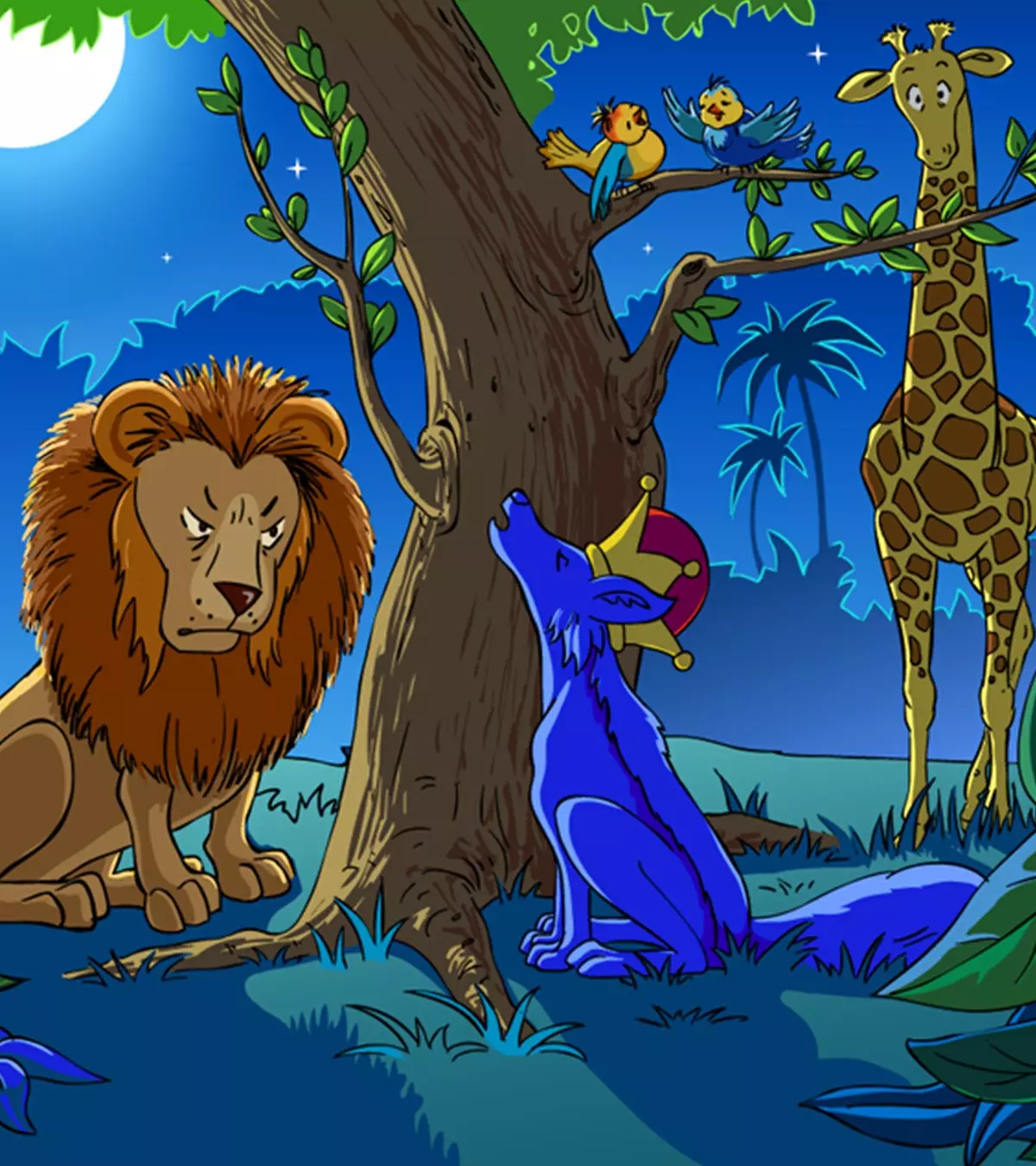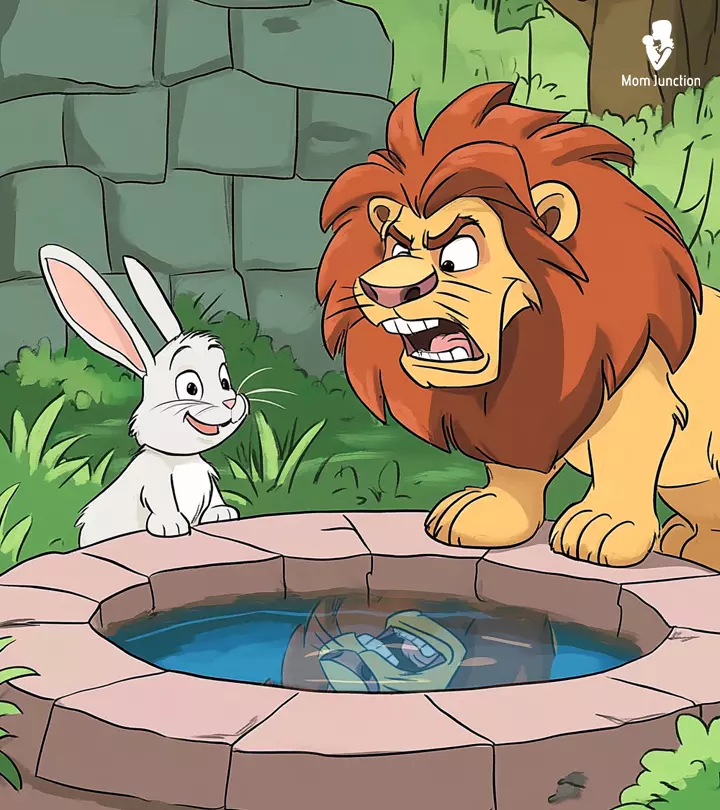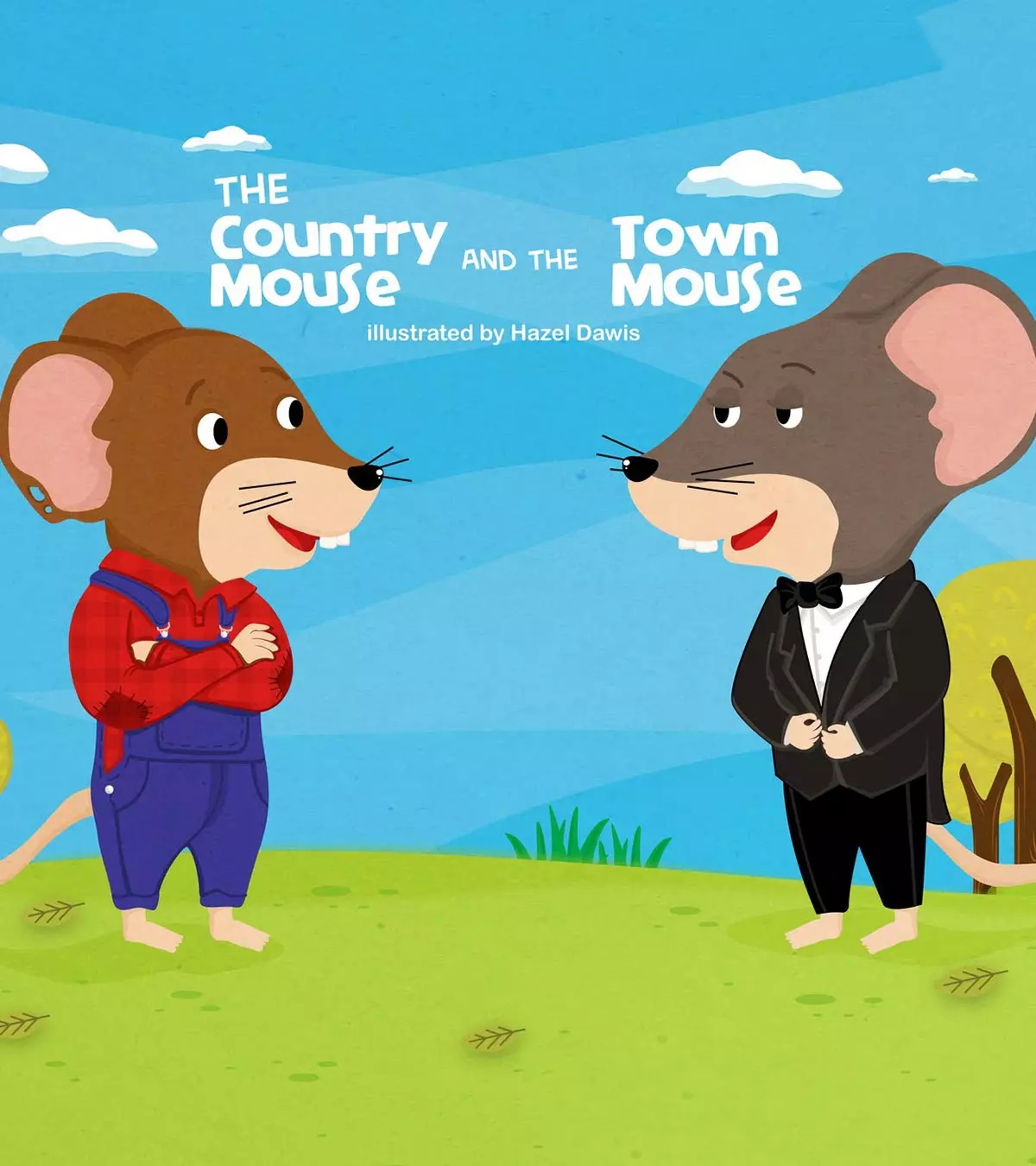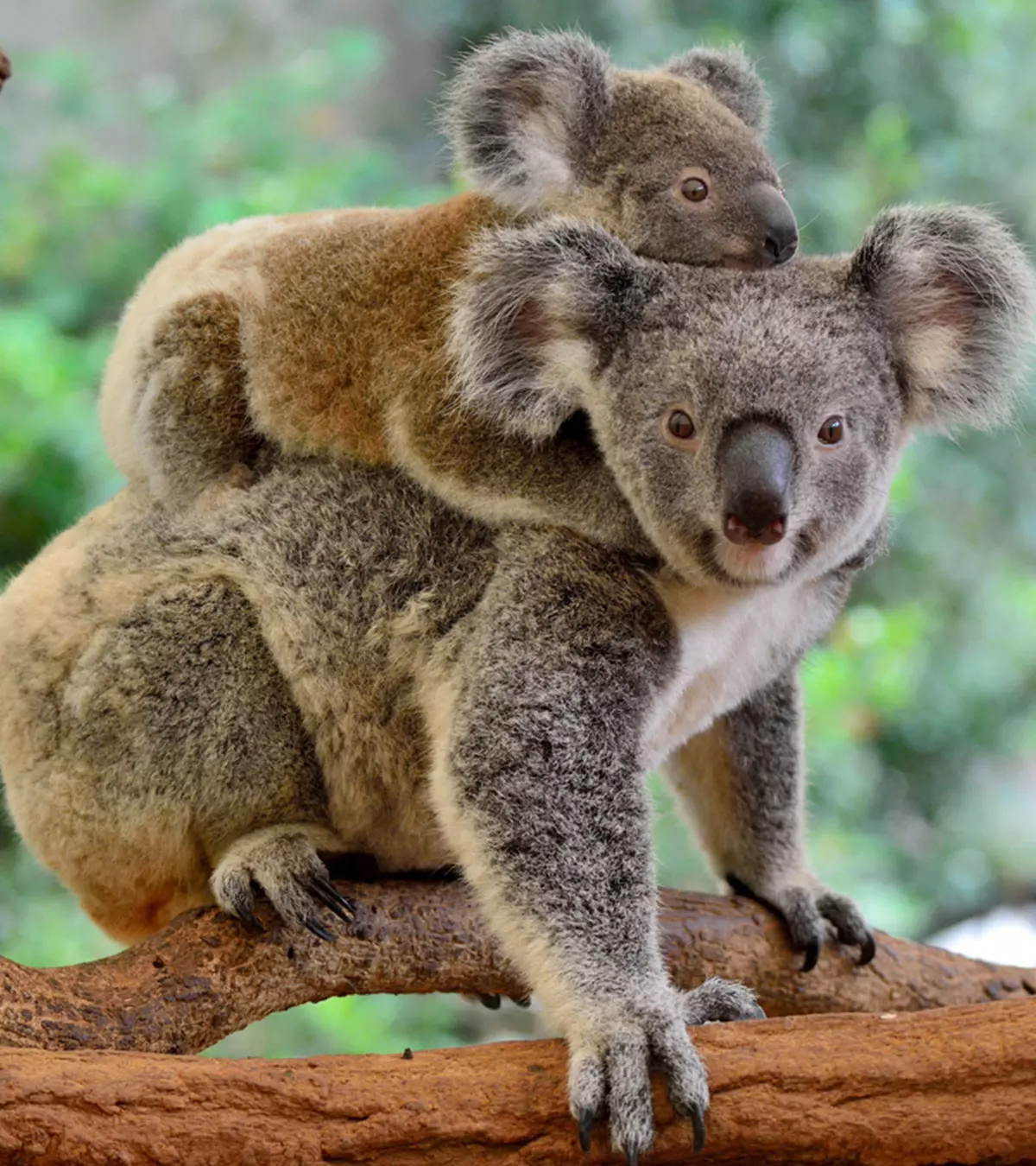
Image: ShutterStock
Koalas are small, gray, furry, cute-looking tree-dwelling mammals that attract adults and children. Perhaps that is why children stay enthusiastic to know more about these marsupials from Australia. So, here we bring you some interesting koala facts for kids. Learn about how koalas are related to wombats, their average lifespan, height, weight, habitat, food, and socialization skills. It also gives you an insight into their distinctive appearance and survival skills.
 Did you know?
Did you know?Key Pointers
- Koalas are marsupials, and they carry their offspring in a pouch like a kangaroo.
- Koalas are often called ‘koala bears’ due to their appearance. But they are not bears.
- Koalas are herbivores, and they mostly eat eucalyptus leaves, sometimes mud and dirt, to aid in digestion. Learn more facts by scrolling down.
Are Koalas Bears?
No, koalas are not bears. Like kangaroos, koalas carry their young ones in their pouches (1). As they resemble living teddy bears, they are mistakenly called ‘koala bears.’ However, koalas are marsupials, and their scientific name is Phascolarctos cinereus (2).
Where Are Koala Bears Found?
Koalas are natives of Eastern and Southeastern Australia, Queensland, New South Wales, Victoria, and South Australia (1). The fascinating arborealiLiving in trees. and cuddly-looking animals usually live in open eucalyptus woodlands.
They are round-headed and their tailless stout body, yellow eyes, black round leathery nose, large fluffy ears make them look unique (2).
Michele, a mother, reminisces about a trip she and her family took to Hanson Bay Sanctuary’s Koala Walk at Australia’s Kangaroo Island. She says, “We took our time strolling along the avenue of gum and eucalyptus trees, peeking up through the leaves and branches in search of the cuddly animals. Hubby was the best at spotting them, with my girl also proving herself to have keen eyes. All in all, we saw nine koalas, four wallabies, five kangaroos, and a few colorful birds. The sign out front stated that 23 koalas had been found that day. All were free to roam wherever they liked, not confined to pens (ⅰ).’’
What Do Koala Bears Eat?
Koalas are herbivores who live by feeding on the foliage or the leaves of certain types of eucalyptus trees. Their daily diet includes around 1.3kg (3lb) of eucalyptus leaves (3). The koalas have a long intestinal pouch and cecumiThe initial segment of the big intestine, a pouch. , which is two meters or seven feet long. It nurtures beneficial, symbiotic bacteriaiBacteria that interact and live with other organisms or each other for the benefit of both or one of them. to break down the toxic substances and tannins present in the leaves to help their digestion. They also eat mud or dirt in intervals to help digest eucalyptus leaves (3).
The strong claws and toes help them grasp the branches. As they are picky eaters, it sometimes becomes difficult for koalas to find food on their own (1). Also because their diet is low in nutrients and provides less energy, koalas sit or sleep for long hours in tree forks. They sleep for up to 18 hours a day (1).
38 Interesting Facts About Koalas For Kids
Here are some intriguing facts about koalas.
- The term koala means ‘no water.’ It is speculated that koalas get the water they need from the moisture of eucalyptus leaves. Therefore, they rarely drink water (1).
- Koala fossils unearthed in Australia date back to about 20 million years.
- Koala is divided into three recognized subspecies, Queensland koala (P. c. adustus), New South Wales koala (P. c. cinereus), and the Victorian koala (P. c. victor).
- It is said that the brain size of modern-day koalas is reduced compared to their ancestors, probably to adapt itself to the less energy derived from their diets (4).
- Koalas are nocturnal animals. They sleep throughout the day and rummage for food at night (2).
- Though koalas are peaceful and calm most of the time, they produce loud and hollow grunts from time to time.
- Koalas’ fingerprints are almost similar to human beings (4).
- They have sharp claws that help them climb the bark of the trees (2).
- Koalas have a low metabolic rate since a diet rich in fiber provides the least nutrients (2).

Image: Shutterstock
- Since koalas cannot store too much fat in the body, they spend most of their time sleeping to save energy.
- They have soft, thick fur, long ears with white hair on the tips, beady eyes, and a leathery nose (2). Their small mouths open wide.
- Koalas have two thumbs on their front paws, and all toes have curved and sharp claws (2). On the hindfoot, its second and third toes are joined together and have rough pads to help climb and groom.
- They are the only marsupials without tails. They are quite agile and can run as fast as a rabbit.
- Besides their tree-climbing ability, they also have a powerful sense of hearing and smell (2).
- They make grunting or wailing sounds to communicate with each other (4).
- The male koala is called a buck. The female koala is called a doe.
- Male koalas are 50% larger than females and have a vast, dark scent patch on the center of their chest. Females have a smaller patch than males. These scent patches are used for marking tree territories.
- The koalas are usually quiet and solitary animals except during breeding seasons (2).
- They breed in the summer and give birth to only one young one called ‘joeys (3).’

Image: IStock
- The gestation time is about 35 days (2).
- Joeys are around 2cm, about the size of a large jelly bean, at birth and are born without fur. Besides, at the time of delivery, their eyes and ears are closed (4).
- The newly born joeys are delicate until they grow fur because they cannot regulate their body temperature.
- The joeys continue to develop in their mother’s abdominal pouch for five to six months (4).
- The koala’s pouch is in the rearward direction.
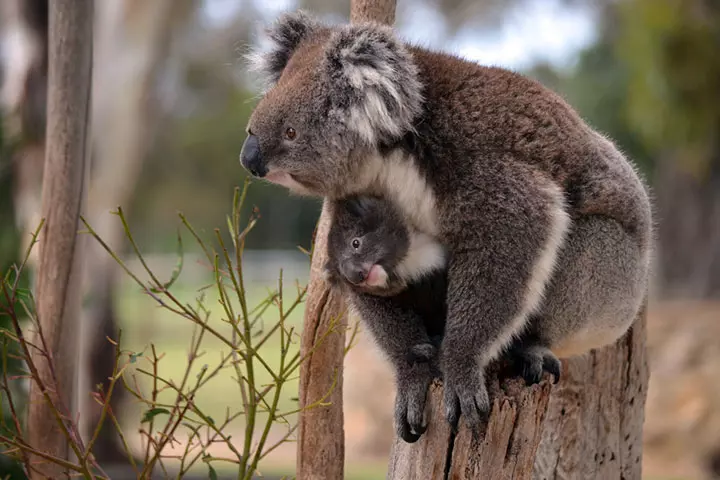
Image: Shutterstock
- For up to six weeks, the joeys are weaned on a soupy, predigested eucalyptus called papiA specific type of feces, or droppings, which is a significant component of the diet of young koalas. that is directly lapped up from the mother’s anus. Presumably, pap is derived from the cecum (2).
- After weaning, they emerge from their mother’s pouch. However, the joeys continue to cling to their mother’s back till they are about one–year-old.
 Trivia
Trivia- Interestingly, koalas have a firm and supportive butt. They have strong cartilage at the end of their curved spines, allowing them to build a comfortable home for themselves on eucalyptus trees.
- Koalas can live up to 15 years when in the wild and longer in captivity.
- When koalas are under stress, they are also susceptible to chlamydia. This disease causes blindness and makes females infertile (1).
- The International Union for Conservation of Nature (IUCN) has listed koalas as vulnerable in 2016.
- The Australian government has included koalas in the list of endangered species (5).
- It is illegal to keep koalas as pets.
Threat To Koalas
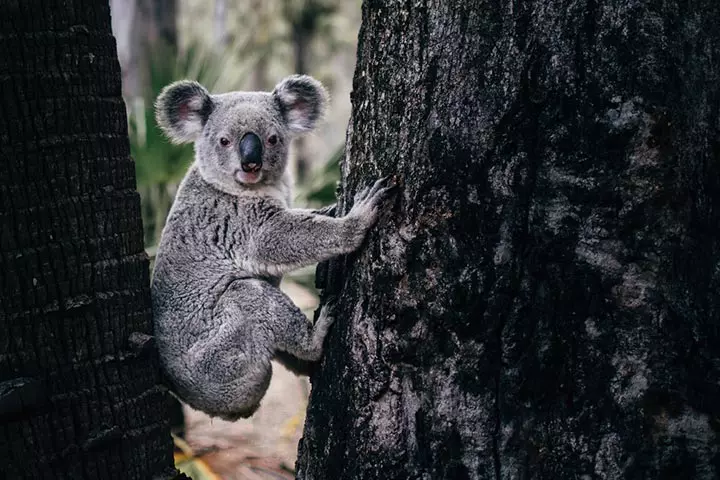
Image: Shutterstock
- According to a survey, koalas have steadily declined by about 28% between 1984 and 2012.
- In April 2012, the Australian government declared koalas as vulnerable under the federal EPBC, and New South Wales and Queensland acts. However, Victoria and South Australia are excluded from this listing.
 Research finds
Research finds- Due to deforestation, the koalas’ habitat is under severe threat. With no trees, koalas forage on the ground for food, exposing themselves to dangers (1).
- Between 1920 and 1930, koalas were killed for their fur. As a result, their population decreased from millions to hundreds and became extinct in some places.
- To prevent their complete extinction, scientists have moved koalas to smaller offshore islands, where they thrived.
- Although there are many koalas, their habitat has been dramatically reduced due to encroachment by farmland and urban development, putting them in danger of extinction.
Frequently Asked Questions
1. Can koalas swim?
Yes, koalas can swim, and often they are seen swimming across rivers for food. However, there also have been instances where koalas have drowned in swimming pools because they are not able to get back out without assistance (6).
2. Do koalas have teeth?
Yes, koalas have teeth, but unlike other marsupialsiTypically, a mammal that has a pouch in front of its belly. , they haven’t adapted to combat the negative effects of teeth grinding. Hence, once their teeth are worn out from constant grinding on harsh leaves, they cannot feed (7).
3. How do koalas protect themselves from predators?
Koalas have acute hearing and a well-developed sense of smell, allowing them to detect approaching predators. They are particularly sensitive to disturbances or movements, which helps them anticipate potential threats and take evasive actions. Once they predict danger, they climb trees. Koalas’ fur is dense and has a mottled gray color, which helps them blend into the surrounding trees. This natural camouflage makes it difficult for predators to spot them.
4. What is the conservation status of koalas?
As of February 2022, the conservation status of koalas has been downgraded from vulnerable to endangered. This change signifies the need for a heightened level of protection for koalas residing in Queensland, New South Wales, and the Australian Capital Territory.
5. What are the common threats to koalas?
Climate change, deforestation, fires in forests, habitat loss, diseases, and attacks by domestic animals such as cats and dogs have posed threats to koalas. Koalas are prone to various diseases, most notably chlamydia, which can cause infertility, blindness, and even death. Domestic dog and cat attacks pose a significant threat to koalas, particularly in areas where urban development encroaches upon their habitat.
For millions of years, koalas have inhabited the earth. However, habitat loss, bushfires, and drought have contributed to the decline in their population.Sharing facts about koalas for kids could be a great method to teach your children about these cute and fuzzy creatures. With your children, you can share information about their habitat, life spans, different species, foods, remarkable skills, body parts, different names, and causes for their extinction. You could share these facts while your children work on koala coloring pages, ensuring a productive learning session. These facts will undoubtedly pique your child’s interest and encourage them to recognize the need to protect this adorable creature.
Infographic: Saving Koalas
Koalas are adored worldwide. Unfortunately, they are listed as endangered species by the Australian Government. Scroll down for an infographic that discusses the reasons behind their endangerment and learn what we can do to save them. Illustration: Momjunction Design Team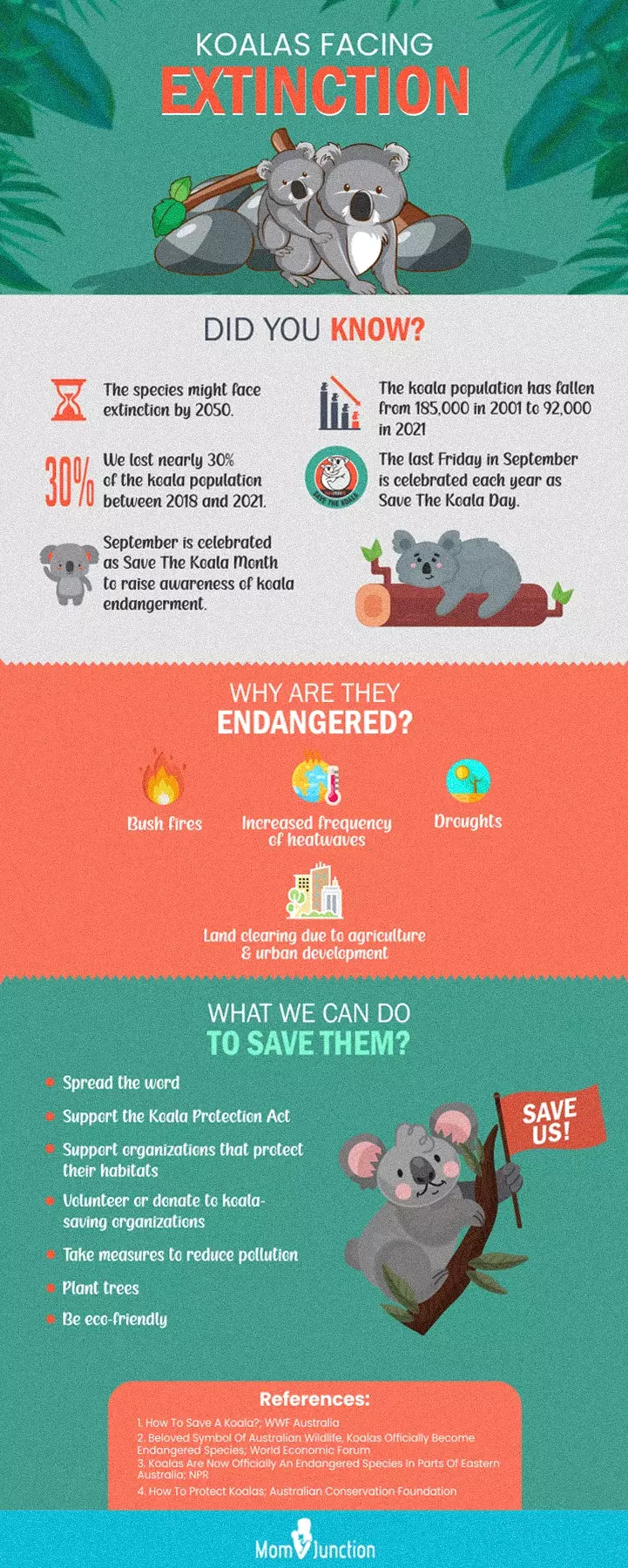
Illustration: Interesting Facts About Koalas For Kids

Image: Stable Diffusion/MomJunction Design Team
Uncover 30 intriguing facts about these adorable marsupials, from their unique diet to their fascinating tree-dwelling lifestyle in this interesting video.
Personal Experience: Source
MomJunction articles include first-hand experiences to provide you with better insights through real-life narratives. Here are the sources of personal accounts referenced in this article.
ⅰ.Kangaroo Island’s Koala Walk;https://malaysianmeanders.blogspot.com/2013/03/kangaroo-islands-koala-walk.html
References
- 10 Interesting Facts About Koalas; WWF Australia
https://www.wwf.org.au/news/blogs/10-interesting-facts-about-koalas////////#gs.uulqoc - Koala facts | Environment | Department of Environment and Science Queensland; Queensland government
https://environment.desi.qld.gov.au/wildlife/animals/living-with/koalas/facts - Koala; Sandiego zoo
https://sdzwildlifeexplorers.org/animals/koala - Koala Fact Sheet; Nature
https://www.pbs.org/wnet/nature/cracking-the-koala-code-koala-fact-sheet/7681/ - Australia Officially Declares Koalas as an Endangered Species; Earth.org
https://earth.org/australia-officially-declares-koalas-as-an-endangered-species/#:~:text=The%20dramatic%20decline%20in%20koala - Sloth Vs Koala; The Sloth Conservation Foundation
https://slothconservation.org/sloth-versus-koala/ - Koalas: Not the smartest tool in the shed; The University of Melbourne
https://blogs.unimelb.edu.au/sciencecommunication/wp-login.php?privacy=4&redirect_to=https%3A%2F%2Fblogs.unimelb.edu.au%2Fsciencecommunication%2F2017%2F09%2F17%2Fkoalas-not-the-smartest-tool-in-the-shed%2F%2F - Mohammad Enamul Hoque Kayesh et al., (2020); Koala retrovirus epidemiology, transmission mode, pathogenesis, and host immune response in koalas (Phascolarctos cinereus): a review; NCBI.
https://www.ncbi.nlm.nih.gov/pmc/articles/PMC7413838/
Community Experiences
Join the conversation and become a part of our nurturing community! Share your stories, experiences, and insights to connect with fellow parents.
Read full bio of Dr. Andres Senetiner
Read full bio of Sravani Rebbapragada
Read full bio of Harshita Makvana
Read full bio of Praggya Joshi









